How to Create a Seductive 5-Part Sales Funnel With Landing Pages
By Daniel Ndukwu
It’s no longer enough to throw up a few landing pages, insert buying buttons, and rake in the cash.
Your customers can find all the information they need to make a decision in minutes. The cheapest brands, the closest stores, and the most durable products are a few clicks away.

So why compete on those things? There will always be someone cheaper or arguably better. Instead, create a sales funnel that walks your customers through the buying process in an authentic and enjoyable way.
In this detailed guide, you’ll learn the 5 parts of a killer sales funnel, what each part should do, and how to tie it all together.
What is a sales funnel?
A sales funnel is a deliberate arrangement of your organization’s sales and marketing collateral to move a prospect form first touch to paying customer.
It encompasses top of funnel, bottom of funnel, and middle of funnel content pieces and also takes into consideration the prospect’s stage of awareness.
Put another way, it’s the optimal path from someone hearing about your brand to becoming a customer. You have one right now whether you realize it or not.
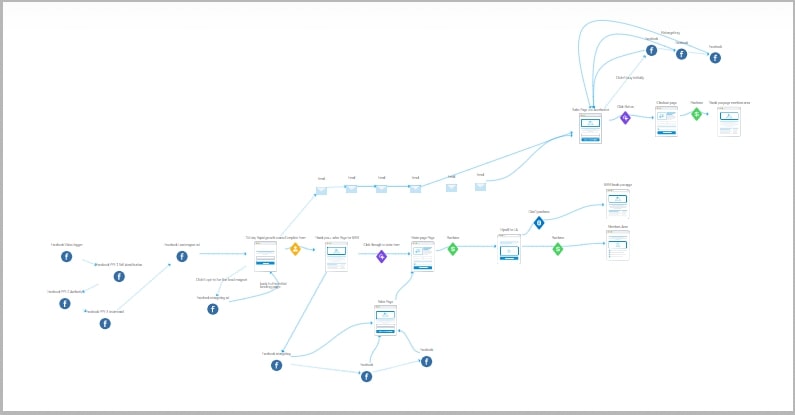
The majority of people only interact with the top of your sales funnel and never get to the bottom where they become paying customers. If you take a deliberate approach to designing your sales funnel, you increase the number of customers you acquire.
In fact, 63% of your prospects need to hear your claims 3 – 5 times before they believe them. A sales funnel makes that number of interactions possible.

Why do you need a landing page sales funnel?
Many people believe that when their product is good enough, it’ll sell itself. If no one knows what your product is or they’re unable to understand its value, they won’t purchase it.
A landing page sales funnel helps you bridge that gap. It educates the prospect in a way that’s natural to them. Think about how you purchase things.
- You hear about a product
- You take a look at the website to see if it can meet your needs
- Go back and do some more research and check out reviews
- Finally decide to purchase.
The steps above don’t account for everything but it’s a close approximation. That’s why, in all but a few situations, a sales funnel is the best way to turn visitors into revenue.
Let’s look at the different steps in the sales funnel.
The right traffic source for your sales funnel
There are countless ways to generate traffic. A few of them include:
- Social media
- Organic search traffic
- Paid ads
- Referrals
You can add more to the mix depending on the type of business you have and your budget. The important thing is understanding which platform is best for you.
For example, if you have a fashion eCommerce brand and wanted to use organic search to as your traffic source then you may want to target terms like men’s jeans or women’s bags.
The problem is that those terms are difficult to rank on the first page. Here’s a screenshot from a keyword research tool:
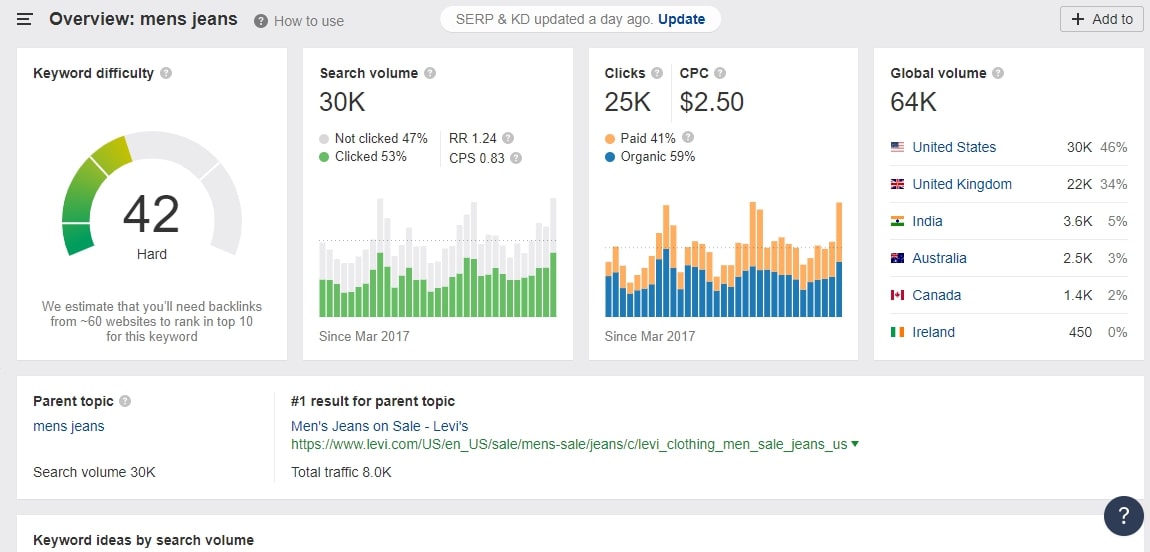
“Men’s jeans gets 30,000 searches a month but is considered hard to rank for. You’ll need links from over 60 websites assuming your domain is as strong as the competing domains.
When you look at the competition, it appears even grimmer:
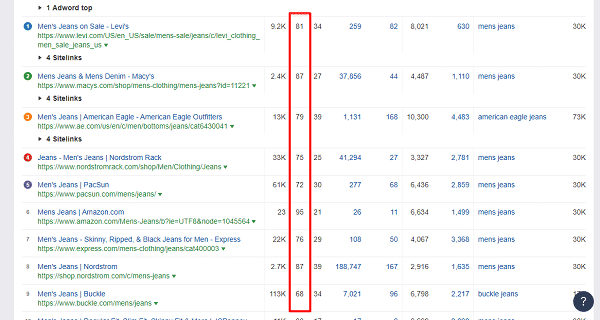
There are national brands such as Levi’s and Macy’s which take the top spot and have a domain rating (a metric from Ahrefs that gauges how strong a website is) of at least 68.
It would take considerable time and investment to take the top spot in those searches. In this case, the traffic source for your sales funnel would need to be something else.
Social media platforms like Instagram, Pinterest, and even Facebook may be a much better choice.
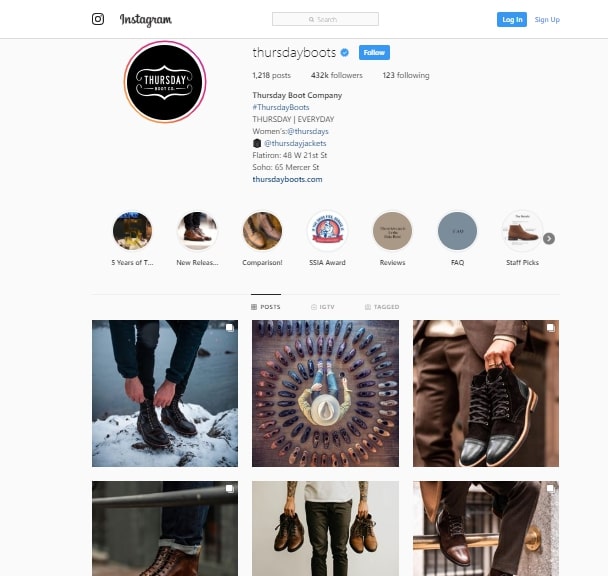
Thursday Boots Company ignored other channels in the beginning and went full force on Instagram and Facebook. Today, it sells thousands of boots a week and has hundreds of thousands of social media followers.
Here are a few things to consider when choosing a traffic source:
- Is your target market on the platform?
- Can you easily reach them?
- Is using the platform affordable or within your budget?
- Will marketing there bring people to your website?
- What kind of sales outcomes can you expect?
- How long will it take for the traffic source to produce an ROI?
The last question is important because even though a traffic source may eventually yield positive results, it can take time.
For example, SEO takes at least 3 – 6 months. Organic social media varies from a few days to a few months. Paid ads can be instant if you get them right or they can take months and lose a lot of money.
Using a money-saving platform can also streamline your approach by helping identify cost-effective solutions and financial strategies for your campaigns.
Choose the one in line with your budget, skillset, and timeframe.
Squeeze page or lead gen device
After choosing and proving a channel that’ll bring you consistent traffic, the next step is creating a lead generation device or intermediate landing page to convert visitors.
Why not go straight for the sale?
Because most users, depending on their stage of awareness, won’t purchase the first time they visit your website. They may be doing research, they may not truly understand the solution, or any number of reasons.
If you don’t prioritize getting their contact information, many of them will forget you exist. When they are ready to buy, they won’t patronize you.
That’s why it’s so important to have intermediate steps to collect contact information. You can then nurture leads until they’re ready to buy.
This step can take many forms. It may be a landing page, a discount popup, or even a consultation call. Of course, it depends on the type of business you have and your goals.
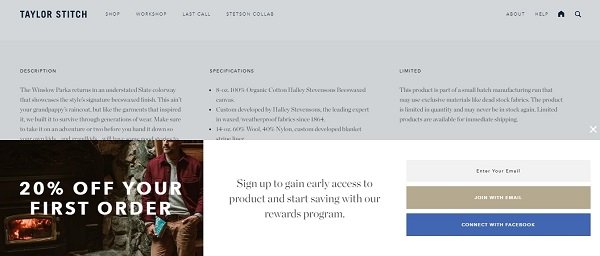
In the example above, Taylor Stitch offers a 20% discount for the first order. The only prerequisite is adding your contact information. If you’re not ready to buy today (which accounts for as much as 96% of visitors), it’ll keep following up with you until you are.
It can also create a sense of urgency by putting a time limit to redeem the coupon. That means whoever signs up will have the discount top of mind.
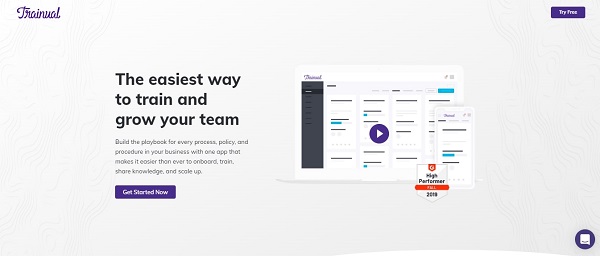
In the above example from Trainual – the focus is on starting a free trial. Prospects land on the page, watch a video, and test out the product to see if it’s right for them. They’re asked to purchase after they’ve finished their trial.
The most important thing to consider at this point is what would make the most sense for your business. Would a free trial, discount, lead magnet, etc. be the best way to move people from where they are now to the next step in your funnel?
Thank you page role in your sales funnel
The thank you page is often overlooked because many people feel they’ve already gotten the contact information.
This is a mistake.
It can be a great opportunity to reinforce what they already believe – the confirmation bias - and lead them towards the next step in your funnel.
Consider adding a secondary conversion action such as registering for a webinar or booking a call to help them move along.
Email sequence
The email sequence is one of the most important parts of your sales funnel. It allows you to communicate with your prospects over an extended period of time. You can share your company philosophy, instill buying beliefs, and finally send people to a sales page.
The most important aspects of your email sequence are segmentation and lead nurturing.
Segmentation is the process of dividing people into smaller groups so you can send targeted messages that are more likely to produce your desired action. For example, you can divide all your subscribers into males and females. The females get a nurturing sequence that helps you sell bags and heels while the males get nurturing sequences that help you sell suits.
Another way to segment users is based on their behavior, psychographics, preferences, or even geographic region. Of course, it’ll depend on your business and the type of products you’re selling but it can be an effective strategy.
The email below asks users to “choose their own path” and select the information that’s most important to them. After making a selection, they’re sent more information in line with their preferences.
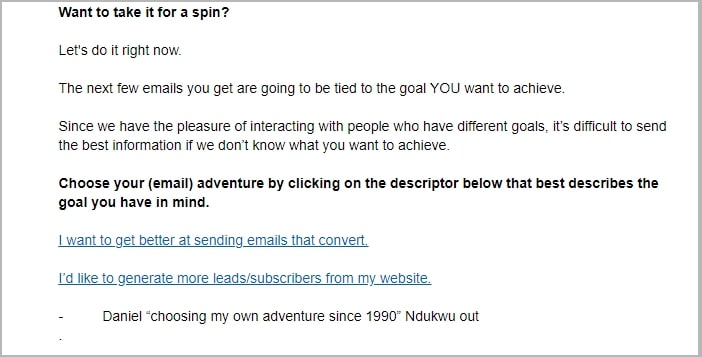
The next thing your email nurturing sequences should do is instill the right buying beliefs. For example, if people need to believe that supplements are the best way to lose weight before purchasing from you, that’s what your nurturing sequence should focus on.
If people need to believe that building an email list can grow their business before buying your list building training, then focus on that.
How long should it be?
I hate to give you this answer, but it should be as long as it needs to be.
Length depends on a number of factors such as:
- Price of product
- Prospects stage of awareness (more on that in a moment)
- How cutting edge the product is (AI would need more explanation than headphones)
- Motivation to solve the problem
A rule of thumb you can follow is that the more expensive your product and the less essential it is, the longer your email nurturing campaign needs to be. A $2,000 watch needs a longer sequence than a $20 pack of underwear.
Sales page – the linchpin of your landing page sales funnel
How to build a sales page from scratch is beyond the scope of this guide. In fact, building a sales page is enough to fill up a course because there are many elements:
- Headline
- Subheadline
- Bullets
- Layout
- Imagery
- Call – to – action buttons
- Etc.
But there’s something that’s even more important – your prospect’s stage of awareness. If someone doesn’t know they have a problem then they’re not looking for a solution. If they’re not looking for a solution then they won’t buy what you’re selling.
If someone has a problem and they’re looking for the best vendor for a solution then they don’t need to be told about the problem.
These are stages of awareness and there are 5 in total but I want to touch on three of the most relevant.
Stages of awareness
The most successful sales pages are built around the stage of awareness of your prospect.
Unaware – people in this stage may have a problem but don’t know what it is and if there’s even any treatment/solution. For example, a receptionist may have persistent pain in their joints from typing too much and not realize there’s a condition known as Carpal Tunnel Syndrome.
Problem aware - these are people who realize they have a problem but don’t yet know what the solutions are. For the receptionist, they just found out they may be suffering from a condition known as Carpal Tunnel syndrome.
Solution aware – This stage is made up of people who understand the different types of solutions available to them. In the example of the receptionist, they now know Carpal Tunnel Syndrome can be treated with an anti-inflammatory, a wrist brace, and rest. The next step is to choose a type of solution and find the products that deliver it.
Your sales page needs to start at one of these steps before introducing your product. Since a large number of people have already gone through your lead nurturing sequence, they may be solution aware which means you can start your sales page there.
If you’re sending cold traffic to a sales landing page then it’s important to start at the right stage of awareness which can be determined by the ad copy.
Conclusion
We’ve only scratched the surface of what a sales funnel is and isn’t. The most important thing to keep in mind is that there are multiple moving pieces and each one plays an important role.
Copyright 2018 - 2020, KyLeads. All rights reserved.
